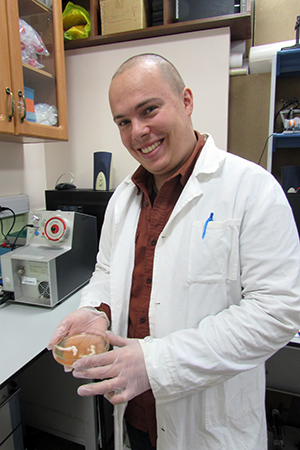
A new approach for the prevention of thrombosis was proposed by researchers from the Moscow Institute of Physics and Technology (MIPT) and the Russian National Research Center for Hematology (NRCH).
“We have chosen ultrasound as a method for blood coagulation monitoring, since it is noninvasive and allows measurements in deep-lying large blood vessels, in which thrombus formation is most dangerous,” says Dmitry Ivlev, an MIPT graduate and a researcher at NRCH.

Photo. Dmitry Ivlev, one of the authors of the study, holds a Petri dish with the fibrin thrombosis from the experiment.
According to the head of the research group, professor Georgy Guria of MIPT’s living systems physics department, who also heads a laboratory at NRCH, “due to the progress in the field of compact ultrasonic sensors, our work opens new prospects for creation of wearable devices for timely medical assistance to patients with a high risk of thrombosis.”


